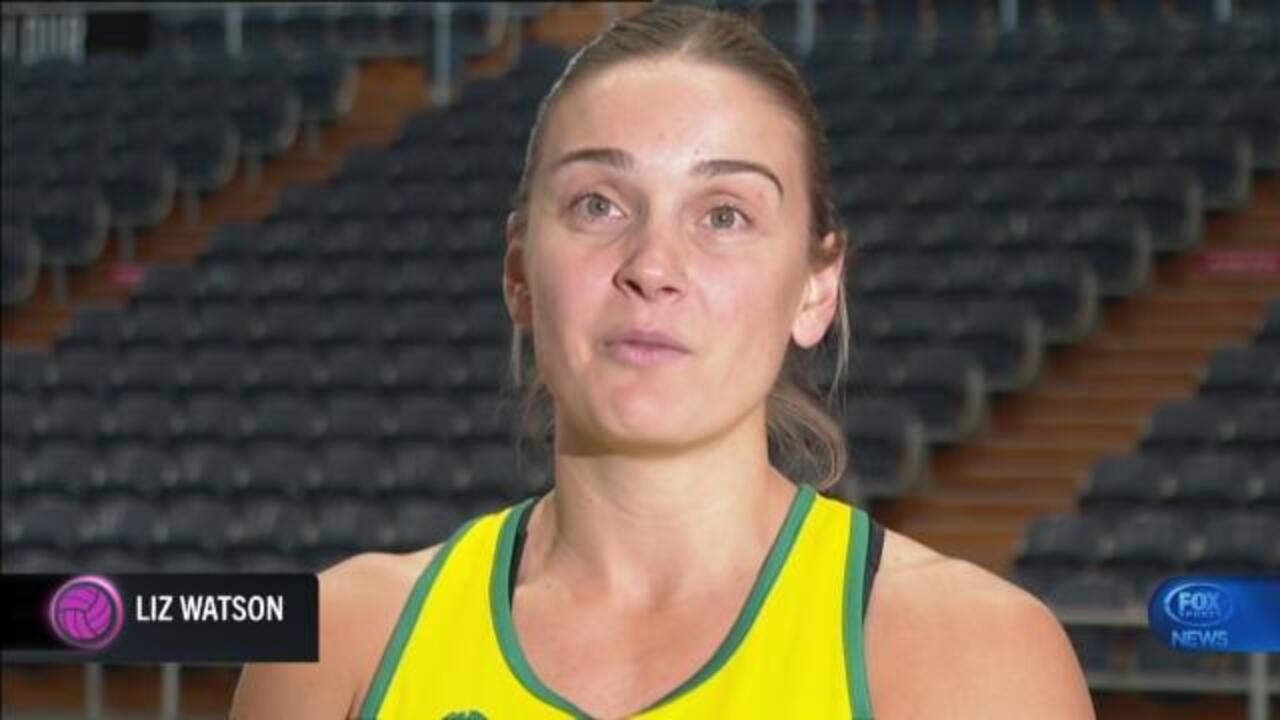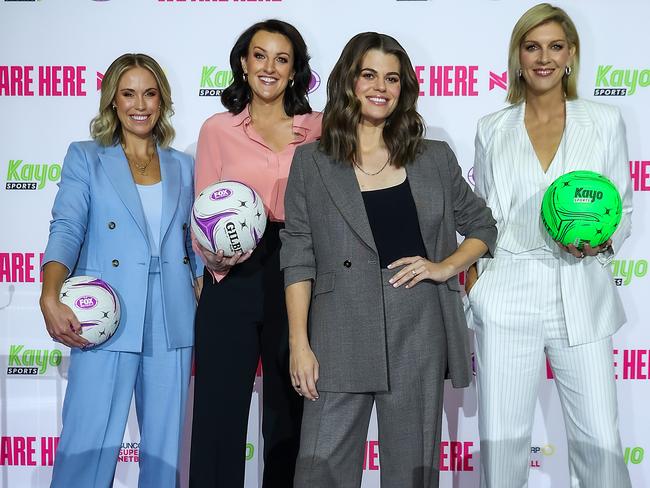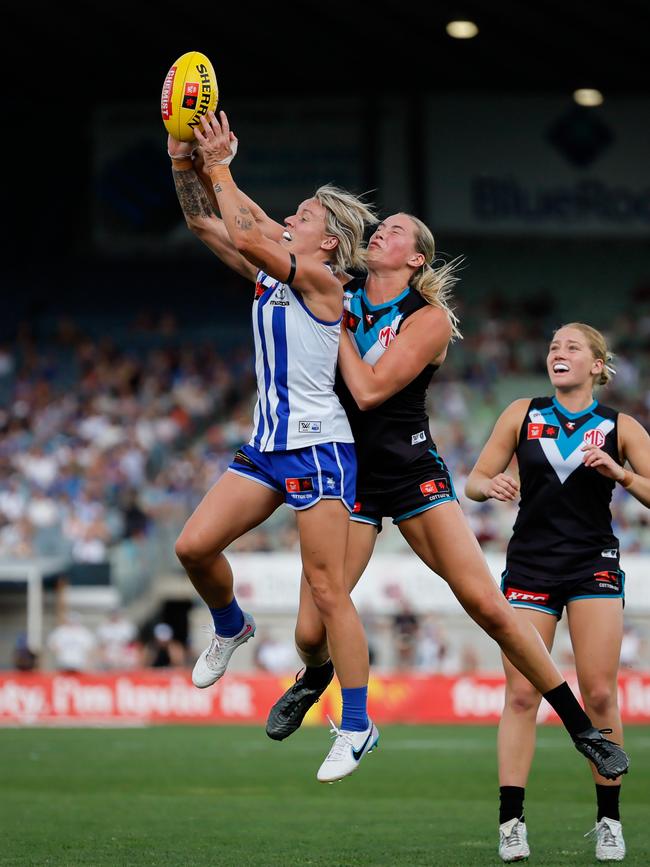No more ‘here if you need’, Netball faces its most important period in competition history
As Super Netball approaches the most important period in competition history, EMMA GREENWOOD analyses the next broadcast deal, ditch the ‘here if you need’ persona and stay ahead of its competition.

Thunderbirds
Don't miss out on the headlines from Thunderbirds. Followed categories will be added to My News.
Reviews, reports, recommendations. Rejection, rebellion, renewal.
Super Netball has seen it all in its opening eight years in a competition that has met its lofty goal of being the best in the world.
So why isn’t the league rolling in cash?
Every ingredient for success is there - the best athletes, elite competition, a massive grassroots feeder system full of people who are responsible for daily decisions on the spending of the household budget - it should be a marketer’s dream.
Instead, the sport has lurched from one financial disaster to another - some of its own making, some unavoidable (hello Covid) - and continues to face roadblocks to success.
As the competition heads into the final stages of its first decade next year when the opening pass of season nine is taken, it faces arguably the most important period in the competition’s history.

Ahead of the next broadcast cycle in 2027, Netball Australia must make fundamental decisions on expansion, trans-Tasman integration or inclusion, and private equity for Super Netball if it is to ensure it retains the best product in the game.
At the same time it needs to make sure there are sufficient opportunities for the next generation of Australian players, especially with a home World Cup looming and the world no.1 Diamonds facing challenges from programs around the world.
All this takes money - and a lot of it.
FINANCIAL FRAILTY
It’s more than two years since Netball Australia was issued with a going concerns notice such was the fear from banks that the game could not afford to pay off its debts.
While that has now been removed, with NA experiencing back-to-back years of modest surplus, as well as inroads made this year into paying down its $4m debt, there are certainly not mountains of gold to fund expansion of a league that is still being funded in part by the grassroots level of the game.
The impact - in terms of publicity and image, if not actually financially after Visit Victoria stepped up at the eleventh hour - of issues such as the collapse of the proposed Hancock Prospecting sponsorship continue to be felt, while Super Netball remains a loss-maker expected to drain several million dollars from the sport’s coffers ahead of the next broadcast cycle.
“The financial challenges of our sport are well known, and we are addressing them,” NA chief executive Stacey West said.

“We have a debt repayment plan that allows us to invest in sustainable growth, and importantly we are meeting those repayments.
“We are also working through a detailed financial analysis of our sport and budgeting for next year.
“Financially, we are stabilising after posting two consecutive years of surplus.”
Super Netball though remains a competition reliant on its broadcast deal to support player payments.
While the Fox Sports deal is understood to be worth $60-$80 million over five years, much of that figure is in the form of production costs - for both Super Netball and Diamonds matches, as well as magazine-style shows.
NA receives an injection of $7 million per year, with Super Netball clubs granted the minimum player payment amount outlined in the salary cap.
While the league and clubs have naming rights and other sponsors, they remain heavily reliant on funding from broadcast rights.
NEW BROADCAST DEAL
Talks on a new broadcasting deal are likely to open sometime next season for a deal starting in 2027.
To get the most bang for its buck, Super Netball desperately needs to increase its free viewership numbers - those experiencing the game in front of the paywall through Kayo freebies.
But that will require plenty of work.
While Super Netball improved its audience across all metrics last season, with record attendance, membership growth and broadcast highs.
With a final total attendance of 366,222 across 60 matches in the fixture rounds and finals, the 2024 season was the best attended season of Australian women’s sport, with an average of 6097 fans at each match.

Several venues were sold out, with some clubs, like the Melbourne Vixens, whose home court at John Cain Arena can cater for up to 10,000, investigating larger venues due to the popularity of their matches, while the West Coast Fever regularly topped 10,000 as the Green Army turned out in force and the NSW Swifts also hit the five-figure mark selling out Ken Rosewall Arena.
Club memberships were also up, while the 2024 season was also the most watched ever across Foxtel Group linear and streaming platforms Foxtel, Kayo Sports, Foxtel Now and Foxtel Go.
Executive Producer of Fox Netball Erin Ferreira said it had been pleasing to see the super-sized content offering had resonated so well with audiences.
“It has been an exhilarating season and we have enjoyed bringing all the action and analysis to netball fans across the country,” Ferreira said.
“Just like our supercharged content offering, we supercharged the Kayo Sports experience this season with the introduction of 4K.
“We’re also thrilled that the Kayo Freebies audience continues to grow, giving more people easy access to the sport.”

SPORTS RIGHTS BATTLE
Women’s sport generally may be on an upward trajectory but sports rights - for both men’s and women’s leagues in Australia and around the world - are generally believed to be at saturation point and only the sports that are able to demonstrate their value for broadcasters are likely to see any growth.
Super Netball needs to make itself the must-have women’s sport asset for broadcasters - in Australia and abroad.
Growth is likely to help that but simply adding another round of games or inserting two more teams without statistical evidence to demonstrate it’s the right market, won’t add value.
Administrators need to be bold, think outside the square and innovate, as well as integrating Diamonds content into the mix as much as possible.
Rusted on Super Netball members and devotees aside, the sport needs to do a better job at converting its massive grassroots network of over one million participants into engaged consumers - viewers of live broadcasts or delayed streams - if it is to remain a tier one sport.
The rise of AFLW and NRLW in particular, is a concern for netball.
Both sports have benefited from enormous broadcast deals for the men’s product to grow their women’s leagues, albeit with different strategies, the AFLW accelerating to 18 teams from its 2022-23 season, while the NRLW has opted for staggered expansion.


One expert in the rights field who spoke to Code Sports suggested Super Netball had a “maximum of two to three years, maybe four” to get its act together before AFLW, which has diluted its product with such rapid growth, became a “compelling product”.
The success of the women’s State of Origin series this year though, both in attendance and TV ratings, suggests the NRLW could get there first.
Regardless, netball - at the elite end anyway - needs to shed its homely “here if you need” persona and ruthlessly promote itself as a matter of survival.
Melbourne Mavericks general manager of netball operations Shae Bolton-Brown said the sport needed to exploit its position as a world leader.
“I think it’s the real point of difference to other sports spectating opportunities in Australia at the moment is that you can go down to John Cain Arena (in Melbourne), or Nissan Arena (in Brisbane), or wherever the games are being played and see the best of the best competing,” Bolton-Brown said.
“You can’t go and watch Sam Kerr play in her usual domestic league because there isn’t the opportunity in other sports, whereas in netball, we’re attracting players from all over the world, and that’s only, in my view, improving Australian netball in the process.”
SUPER NETBALL SPECIAL
PART 1: Ticking time bomb facing Super Netball
PART 2: Hutchy’s ambitious plan as Super Netball confronts its future
PART 3: Netball confronts the most important moment in its history
CONTRACTING CALAMITY
More teams and more players means more contracts too, though.
After a poisonous and protracted pay war last year, few in the sport are looking forward to the next round of negotiations when every player in the league will again be off contract.
The flurry of movement and recontracting may be exciting for fans but it’s a nightmare for administrators and gives no real long-term security for players either.
Many in the sport are keen for reform, with the ability to contract across CPA periods and allowing for indexing that might be won in any agreement.
Netball Queensland general manager of high performance Adrian Thompson believes a centralised contracting model, with top ups for Diamonds players, is the way to go.
“I don’t think we can get to the stage that at October 1 next year, all the girls are on their last year of a contract, which effectively puts them on a one-year contract again, and not be able to contract across CPAs,” Thompson said.

“That talks to the professionalism and the growing maturity that the sport will get … and is for the security of the player and the club.”
Netball Queensland and Firebirds CEO Kate Davies said being able to contract across CPA periods would also help the sustainability of athletes coming through the pathway system.
“If they’re staring down, ‘Well, I’m only on (contract for) one more year, there’s no certainty (in Super Netball) but maybe I’m going to get offered this in another league’ … then girls are going to start playing over(seas).
“We see it as a it’s a value proposition argument, that we’ve got to be able to contract over those CPAs so we can continue to build our lists out beyond 2026 so the players and the club can both see a future.”
PLAYERS INVESTED
Having a say in their future was key to players in their last rights negotiation.
They are now true partners in the game, having won a hard-fought-for revenue share where players will receive 20 per cent of revenue above an agreed sponsorship forecast.
It’s therefore in their interest to see the game thrive.
“Not only are our athletes the stars of our game, but they are also now true partners,” West said
“We have a landmark Suncorp Super Netball Collective Player Agreement in place until the end of 2026, which has revolutionised the way our players are paid and recognised.
“It incentivises both players and administrators to grow the game for the benefit of all who love and invest in it.”

In poisonous negotiations that pit the players against the former administration and ultimately cost former CEO Kelly Ryan her job, athletes were at times painted as greedy individuals out for whatever they could get from the sport.
But the playing cohort always understood that they had to protect the viability of Super Netball to ensure their own, as well as the next generation’s ability to remain full-time professionals.
And they comprehend any expansion of the league will be underpinned by hard data and metric around financial capacity and broadcaster desire as well.
“What’s important to the players, besides more teams, more games, more opportunities for players, is the long-term sustainability of the sport,” Australian Netball Players Association (ANPA) chief executive Kathryn Harby-Williams said.
“The detail is what determines where you land (on expansion).”
More Coverage
Originally published as No more ‘here if you need’, Netball faces its most important period in competition history




